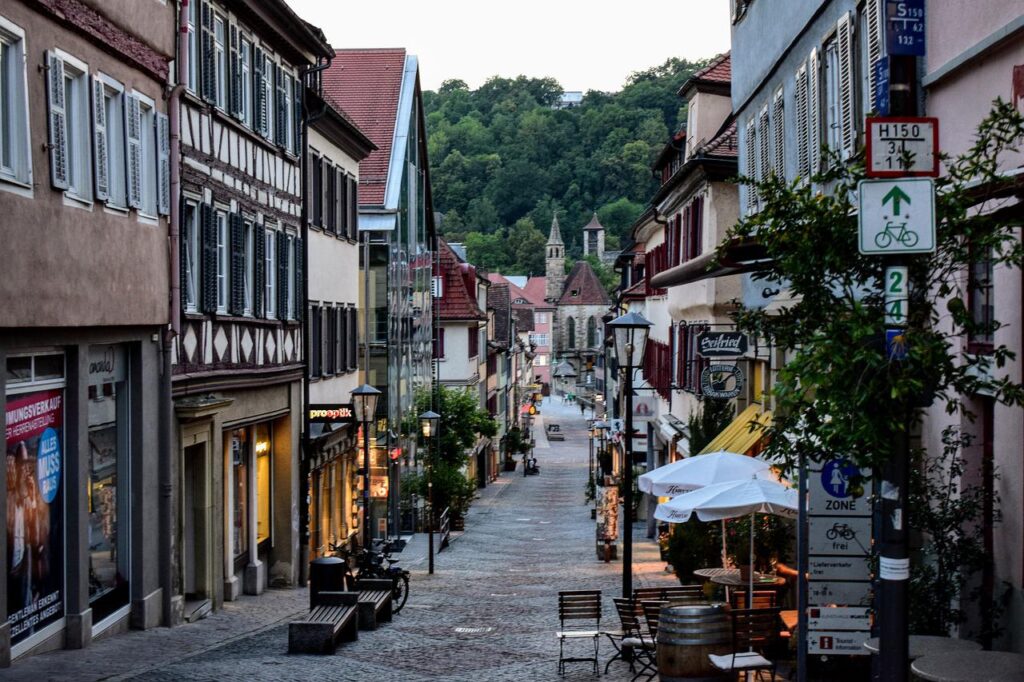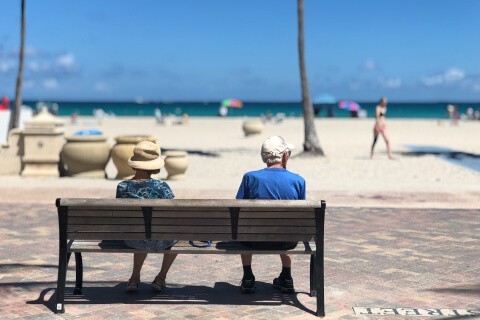Why do we have new commercial licences?
On the 1st September 2022, the government changed the commercial licences following ongoing changes surrounding the COVID-19 pandemic, this essentially grouped many of them together and made things easier for businesses to continue to trade as they could easily continue to function under what would have otherwise been a different but very similar licence. It also made it easier for new businesses to open up an not have as much concern as to whether planning permission would be granted.
What are the new commercial property licences?
Class B
- B2 General industrial – Use for industrial process other than one falling within class E(g) (previously class B1) (excluding incineration purposes, chemical treatment or landfill or hazardous waste)
- B8 Storage or distribution – This class includes open air storage.
Class C
- C1 Hotels – Hotels, boarding and guest houses where no significant element of care is provided (excludes hostels)
- C2 Residential institutions – Residential care homes, hospitals, nursing homes, boarding schools, residential colleges and training centres
- C2A Secure Residential Institution – Use for a provision of secure residential accommodation, including use as a prison, young offenders institution, detention centre, secure training centre, custody centre, short term holding centre, secure hospital, secure local authority accommodation or use as a military barracks
- C3 Dwellinghouses – This class is formed of three parts
- C3(a) covers use by a single person or a family (a couple whether married or not, a person related to one another with members of the family of one of the couple to be treated as members of the family of the other), an employer and certain domestic employees (such as an au pair, nanny, nurse, governess, servant, chauffeur, gardener, secretary and personal assistant), a carer and the person receiving the care and a foster parent and foster child
- C3(b) covers up to six people living together as a single household and receiving care e.g. supported housing schemes such as those for people with learning disabilities or mental health problems
- C3(c) allows for groups of people (up to six) living together as a single household. This allows for those groupings that do not fall within the C4 HMO definition, but which fell within the previous C3 use class, to be provided for i.e. a small religious community may fall into this section as could a homeowner who is living with a lodger
- C4 Houses in multiple occupation – Small shared houses occupied by between three and six unrelated individuals, as their only or main residence, who share basic amenities such as a kitchen or bathroom.
Class E – Commercial, Business and Service
In 11 parts, Class E more broadly covers uses previously defined in the revoked Classes A1/2/3, B1, D1(a-b) and ‘indoor sport’ from D2(e):
- E(a) Display or retail sale of goods, other than hot food
- E(b) Sale of food and drink for consumption (mostly) on the premises
- E(c) Provision of:
- E(c)(i) Financial services,
- E(c)(ii) Professional services (other than health or medical services), or
- E(c)(iii) Other appropriate services in a commercial, business or service locality
- E(d) Indoor sport, recreation or fitness (not involving motorised vehicles or firearms or use as a swimming pool or skating rink,)
- E(e) Provision of medical or health services (except the use of premises attached to the residence of the consultant or practitioner)
- E(f) Creche, day nursery or day centre (not including a residential use)
- E(g) Uses which can be carried out in a residential area without detriment to its amenity:
- E(g)(i) Offices to carry out any operational or administrative functions,
- E(g)(ii) Research and development of products or processes
- E(g)(iii) Industrial processes
Class F – Local Community and Learning
In two main parts, Class F covers uses previously defined in the revoked classes D1, ‘outdoor sport’, ‘swimming pools’ and ‘skating rinks’ from D2(e), as well as newly defined local community uses.
- F1 Learning and non-residential institutions – Use (not including residential use) defined in 7 parts:
- F1(a) Provision of education
- F1(b) Display of works of art (otherwise than for sale or hire)
- F1(c) Museums
- F1(d) Public libraries or public reading rooms
- F1(e) Public halls or exhibition halls
- F1(f) Public worship or religious instruction (or in connection with such use)
- F1(g) Law courts
- F2 Local community – Use as defined in 4 parts:
- F2(a) Shops (mostly) selling essential goods, including food, where the shop’s premises do not exceed 280 square metres and there is no other such facility within 1000 metres
- F2(b) Halls or meeting places for the principal use of the local community
- F2(c) Areas or places for outdoor sport or recreation (not involving motorised vehicles or firearms)
- F2(d) Indoor or outdoor swimming pools or skating rinks
Sui Generis
‘Sui generis’ is a Latin term that, in this context, means ‘in a class of its own’.
Certain uses are specifically defined and excluded from classification by legislation, and therefore become ‘sui generis’. These are:
- theatres
- amusement arcades/centres or funfairs
- launderettes
- fuel stations
- hiring, selling and/or displaying motor vehicles
- taxi businesses
- scrap yards, or a yard for the storage/distribution of minerals and/or the breaking of motor vehicles
- ‘Alkali work’ (any work registerable under the Alkali, etc. Works Regulation Act 1906 (as amended))
- hostels (providing no significant element of care)
- waste disposal installations for the incineration, chemical treatment or landfill of hazardous waste
- retail warehouse clubs
- nightclubs
- casinos
- betting offices/shops
- pay day loan shops
- public houses, wine bars, or drinking establishments – from 1 September 2020, previously Class A4
- drinking establishments with expanded food provision – from 1 September 2020, previously Class A4
- hot food takeaways (for the sale of hot food where consumption of that food is mostly undertaken off the premises) – from 1 September 2020, previously Class A5
- venues for live music performance – newly defined as ‘Sui Generis’ use from 1 September 2020
- cinemas – from 1 September 2020, previously Class D2(a)
- concert halls – from 1 September 2020, previously Class D2(b)
- bingo halls – from 1 September 2020, previously Class D2(c)
- dance halls – from 1 September 2020, previously Class D2(d)
Other uses become ‘sui generis’ where they fall outside the defined limits of any other use class.
For example, C4 (Houses in multiple occupation) is limited to houses with no more than six residents. Therefore, houses in multiple occupation with more than six residents become a ‘sui generis’ use.
What commercial use classes have been removed?
Previous use classes are detailed below as in some instances they may still be valid and may need to be refereed back to.
Class A
Class A was revoked from 1 September 2020. Class A 1/2/3 were effectively replaced with Use Class E(a,b,c). A4/5 uses were not covered by Use Class E and became defined as ‘Sui Generis’
- A1 Shops – Shops, retail warehouses, hairdressers, undertakers, travel and ticket agencies, post offices, pet shops, sandwich bars, showrooms, domestic hire shops, dry cleaners, funeral directors and internet cafes
- A2 Financial and professional services – Financial services such as banks and building societies, professional services (other than health and medical services) and including estate and employment agencies. It does not include betting offices or pay day loan shops – these are now classed as “sui generis” uses (see below)
- A3 Restaurants and cafés – For the sale of food and drink for consumption on the premises – restaurants, snack bars and cafes
- A4 Drinking establishments – Public houses, wine bars or other drinking establishments (but not night clubs) including drinking establishments with expanded food provision
- A5 Hot food takeaways – For the sale of hot food for consumption off the premises.
Class B
B1 Business was revoked from 1 September 2020. It is effectively replaced with the new Class E(g).
- B1 Business – Uses which can be carried out in a residential area without detriment to its amenity. This class was formed of three parts:
- B1(a) Offices – Other than a use within Class A2 (see above)
- B1(b) Research and development of products or processes
- B1(c) Industrial processes
Use Classes B2 and B8 remain valid (see ‘Current Use Classes’ above).
Use Classes B3 (revoked in 1992), and B4 to B7 (revoked in 1995) were used to call out specific industrial uses.
Class D
Class D was revoked from 1 September 2020. D1 was split out and replaced by the new Classes E(e-f) and F1. D2 was split out and replaced by the new Classes E(d) and F2(c-d) as well as several newly defined ‘Sui Generis’ uses.
- D1 Non-residential institutions – Clinics, health centres, crèches, day nurseries, day centres, schools, art galleries (other than for sale or hire), museums, libraries, halls, places of worship, church halls, law court. Non-residential education and training centres
- D2 Assembly and leisure – Cinemas, music and concert halls, bingo and dance halls (but not night clubs), swimming baths, skating rinks, gymnasiums or area for indoor or outdoor sports and recreations (except for motor sports, or where firearms are used).




